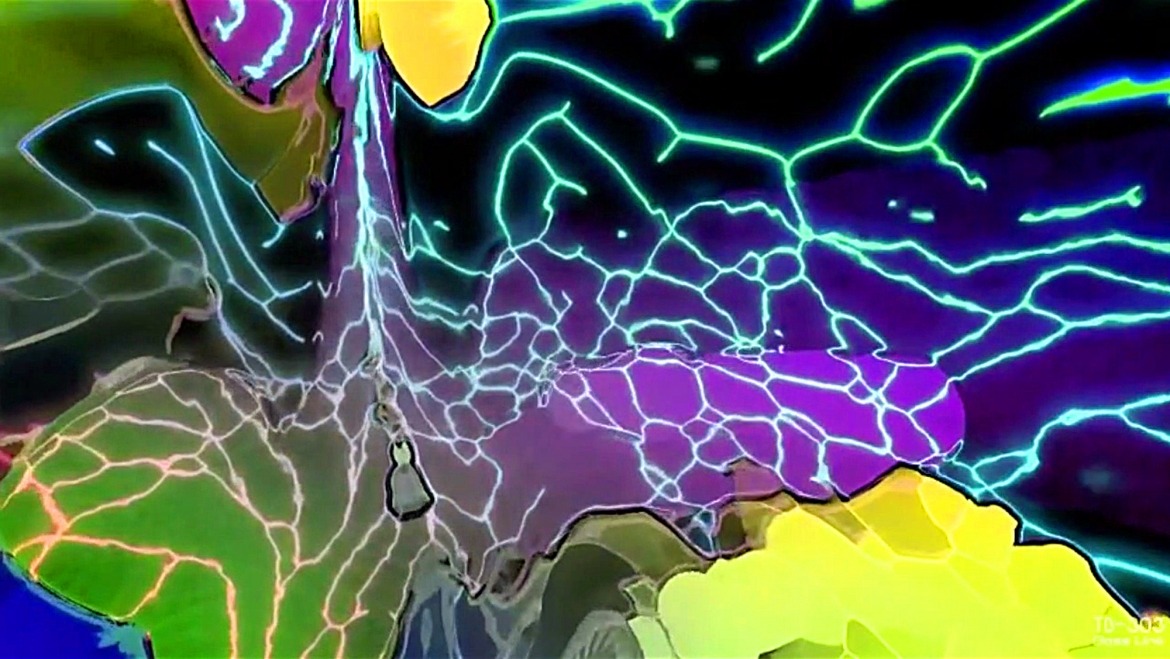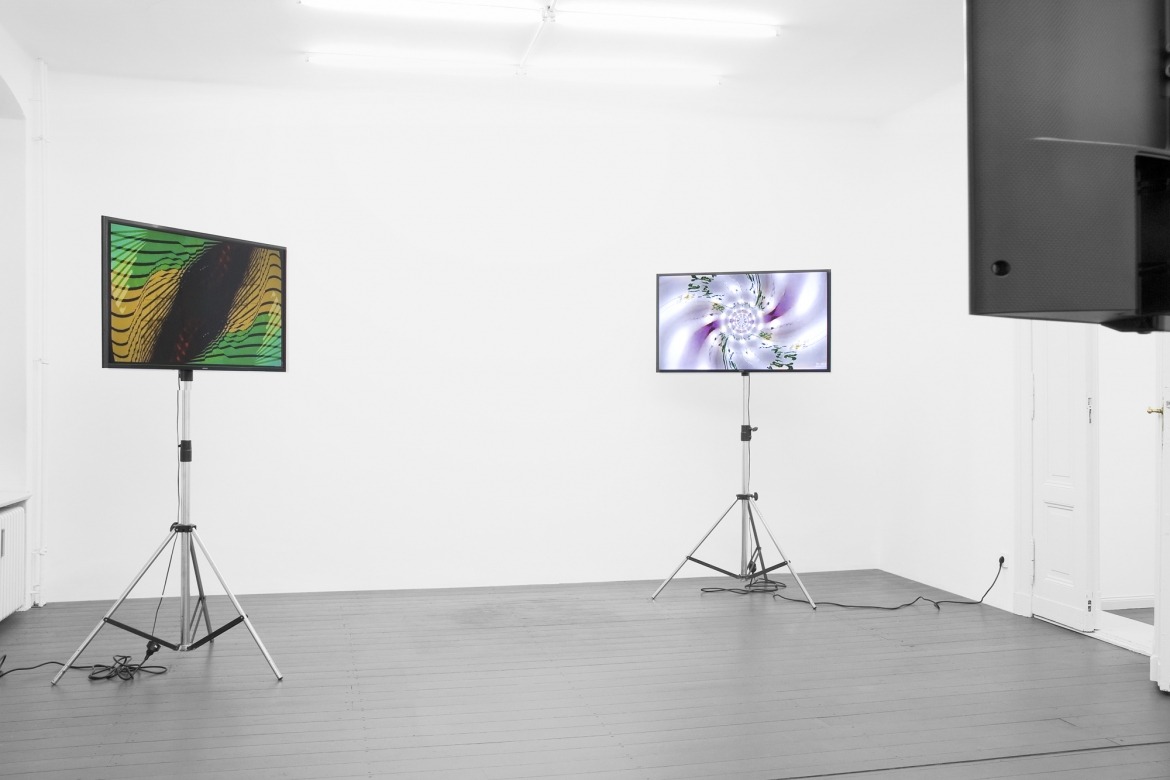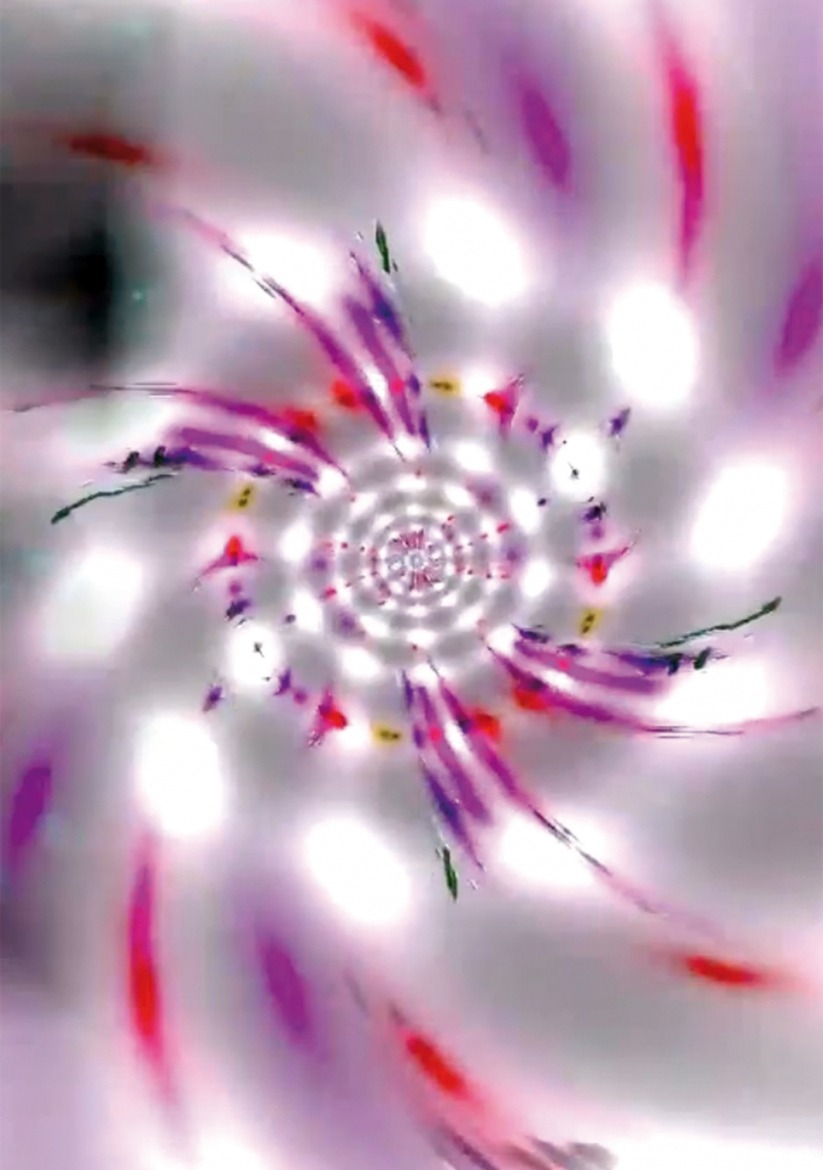
Patrick Fabian Panetta, A Journey Through Vibrant Space, 2016, Installation view, EXILE

Patrick Fabian Panetta, A Journey through vibrant space (Visuals: Baseline 3000, Sound: The Dark Verse), 2016, three-channel video, 45 min

Patrick Fabian Panetta, A Journey through vibrant space (Visuals: Baseline 3000, Sound: The Dark Verse), 2016, three-channel video, 45 min

Patrick Fabian Panetta, A Journey Through Vibrant Space, 2016, Installation view, EXILE

Patrick Fabian Panetta, A Journey Through Vibrant Space, 2016, Installation view, EXILE

Patrick Fabian Panetta, A Journey Through Vibrant Space (Screenshot), 2016, poster Edition of 5, 100 x 70 cm <br>

Patrick Fabian Panetta, How to build the world in Blender, 2016, two- channel video, 11:20 min.

Patrick Fabian Panetta, A Journey Through Vibrant Space, 2016, Installation view, EXILE
Whenever a searching eye encounters barren land, it seeks for shelters that can provide potential sites for hiding and creation. Arid tree trunks become essential elements of orientation – relics of a life cycle on deserted soil. The Land of Nod is such a place in the Book of Genesis, located on the ‘east of Eden’, where Cain chose to flee after murdering his brother Abel. There, as vagabond, he was condemned to wander the land forever.
The location east of Eden is explicit and so named on biblical maps, such as Ortelius’ and Mercator’s. Historical representations of the Land of Nod usually show vast and vacant landscapes, where several paths lead in all directions, entry points could be anywhere.
The Land of Nod is also an English idiom for the imaginary realm of sleep and dreams, followed, one assumes, by waking up. Only emerging from sleep makes a sleep what it is: a restless subconsciousness surrounded by a state of external quiescence, providing the mind with a protection for regeneration.
Both conceptions suggest that the potentiality of absence denotes the state of being away. Here, existence (being) becomes an implicit expectation, because it comes prior to presence (being there) as the necessary premise for the recognition of absence. A Journey Through Vibrant Space.
Excerpt from Sandra Meireis: East of Eden, 2012
Click here to watch excerpt of A Journey Through Vibrant Space















